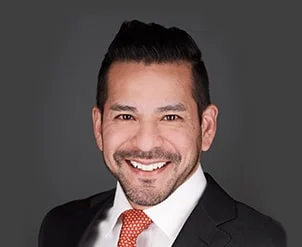How Does Filing Bankruptcy Protect My Car?

Other than housing, vehicle payments are usually the largest monthly bills in Indiana. The average new car payment is just under $600 a month. The average used or leased vehicle payment is not much lower. If a family falls a month or two behind, it’s almost impossible to catch up. And, most lenders have very little patience in this area. In fact, they can legally repossess a vehicle after only one missed payment.
If your family car is at risk, a Chicago bankruptcy lawyer can protect your vehicle, both in the short term and the long term. Filing bankruptcy has other benefits for distressed debtors as well. A voluntary petition is the best way, and usually the only way, to keep creditors at bay, protect your valuable assets, and generally get the fresh start you and your family deserve.
Short-Term Protection
Indiana has some of the most generous bankruptcy exemptions in the country. The wildcard example is a good example. Many states allow debtors to use part of their homestead exemptions to protect motor vehicles and other such property. But Indiana has a $10,250 wildcard exemption. The full amount is available regardless of the homestead exemption or other exemptions the debtor uses.
Bear in mind that petitioners need only protect vehicle equity. If that happens, the trustee (person who oversees the bankruptcy for the judge) usually cannot touch your motor vehicle.
Typically, new cars have high values, but their owners have practically no equity in them. Used vehicles are usually the opposite. Although their loans are mostly or entirely paid off, largely depending on the age of the vehicle, these vehicles have almost no financial value. Leased vehicles have no financial value at all. The leasing company, not the debtor, owns these vehicles.
Other exemptions that prevent trustee seizure include the aforementioned homestead exemption, personal property, retirement accounts, and government benefits.
The Automatic Stay usually prevents creditor seizure. Usually, creditors can only bypass Section 362 of the Bankruptcy Code if the debtor threatens the collateral, perhaps by Tweeting that s/he plans to drive the car off a cliff.
Long-Term Protection
The Automatic Stay lasts up to five years in a Chapter 13. However, even in these cases, this protection ends eventually. Fortunately, other vehicle protections, which are unique to bankruptcy, are available.
The redemption option is a good illustration. Assume Jen owes $10,000 on a motor vehicle which is only worth $5,000. If she pays the bank the current fair market value, which depending on market conditions could be significantly lower than the Blue Book value, the bank must tear up the remainder of the note. As a result, Jen could save thousands of dollars.
Furthermore, bankruptcy gives your Chicago bankruptcy attorney negotiating leverage. Banks know that if they do not offer a favorable refinancing deal, the owner could surrender the collateral, leaving them with almost nothing. Common changes include alterations to the interest rate, payment date (i.e. 60 or 90 days payment-free), and total amount due.
Work with Responsive Cook County Lawyers
Filing bankruptcy protects your car or truck. For a free consultation with an experienced bankruptcy attorney in Chicago, contact the Bentz Holguin Law Firm, LLC. Virtual, home, and after-hours visits are available.
Resource:
lendingtree.com/auto/debt-statistics/


